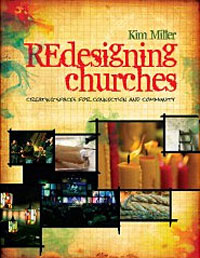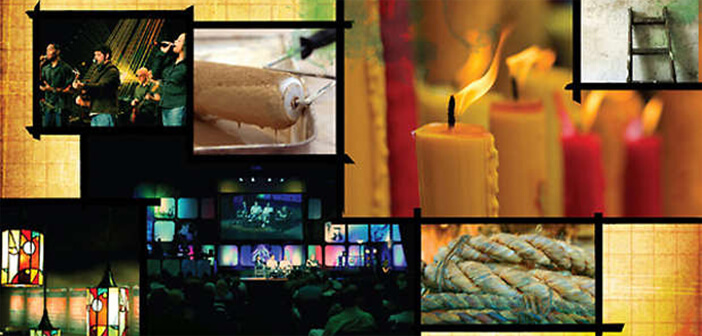Kim Miller’s REdesigning Churches: Creating Spaces for Connection and Community (Abingdon, 2013) provides valuable how-to advice on reviving tired church interiors and offers inspiring examples from her own work at Ginghamsburg Church in Ohio. But the book’s more significant contribution is the angle of vision she brings to this subject — a perspective solidly grounded in the theology of hospitality, the imperative of responsible stewardship, and the spiritual dynamics of team ministry. Reminding us that human creativity is a “vestige of the thumbprint of God on our souls” (Andy Stanley, Deep and Wide, Zondervan, 2012), Miller understands that preparing the places where people experience connection with God and others is an essential ministry.
How might the aging structures we inhabit be reimagined toward kingdom growth and vitality?
Within this framework, she invites congregations to consider what their interior spaces communicate to those arriving. Bemoaning church buildings that feel like a Sunday school version of the reality show Hoarders, she gently reminds us that “how our church buildings are cared for, how the gardens are weeded, how the glass shines, how the spaces are intentionally designed — these details all whisper to human guests that they will or will not be cared for. It’s really the only manual we have on such matters as we enter a space for the very first time” (p. 2).
She then poses the question: How might the aging structures we inhabit be reimagined toward kingdom growth and vitality? The tone of the book is inspiring and positive, particularly since she advocates that churches work with what they already have — their existing structures, volunteers, and their own unique creative vision. Miller’s antidote to the Sunday school version of Hoarders takes a page from the script of another reality show — Design on a Dime!
A growing chorus of church leaders is singing the strains of a tune lamenting how cluttered, tired, and out-of-date church buildings are not only uninviting to newcomers, but demoralizing to the church community itself. Miller’s voice, with its “can-do” optimism and genuine spiritual clarity, adds a fresh note to this refrain. While some of the specific design ideas in her book may eventually go out of vogue, the foundation she builds on will endure.
REdesigning Churches: Creating Spaces for Connection and Community (Abingdon Press, 2013) is available through Cokesbury or Amazon.
Related Resources:
- Unclutter Your Church by Dottie Escobedo-Frank
- Church Renewal Requires Property Renewal by Gerald W. Keucher
- How Do New People See Your Church? by Lovett H. Weems, Jr.







